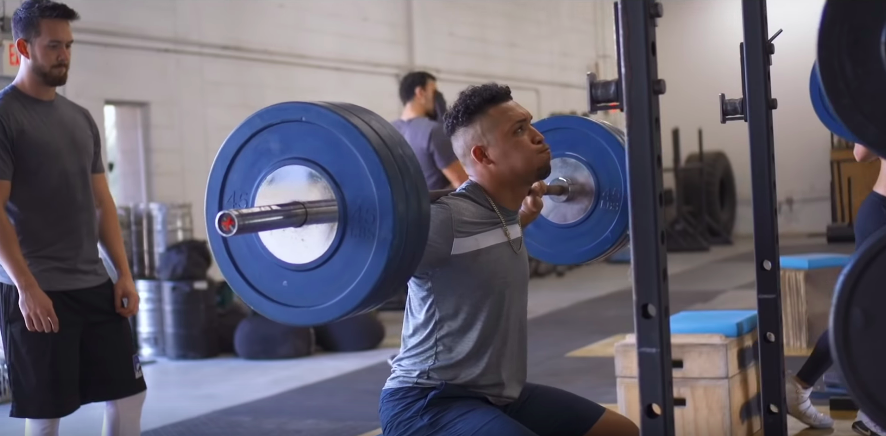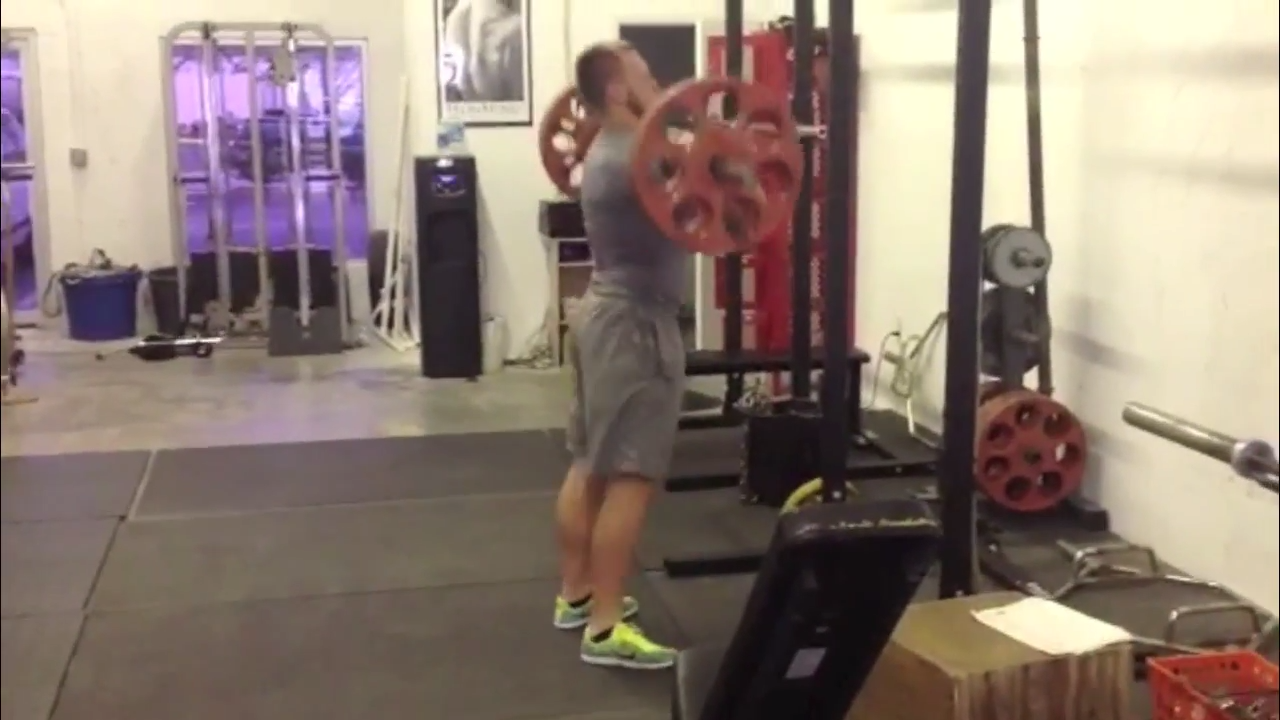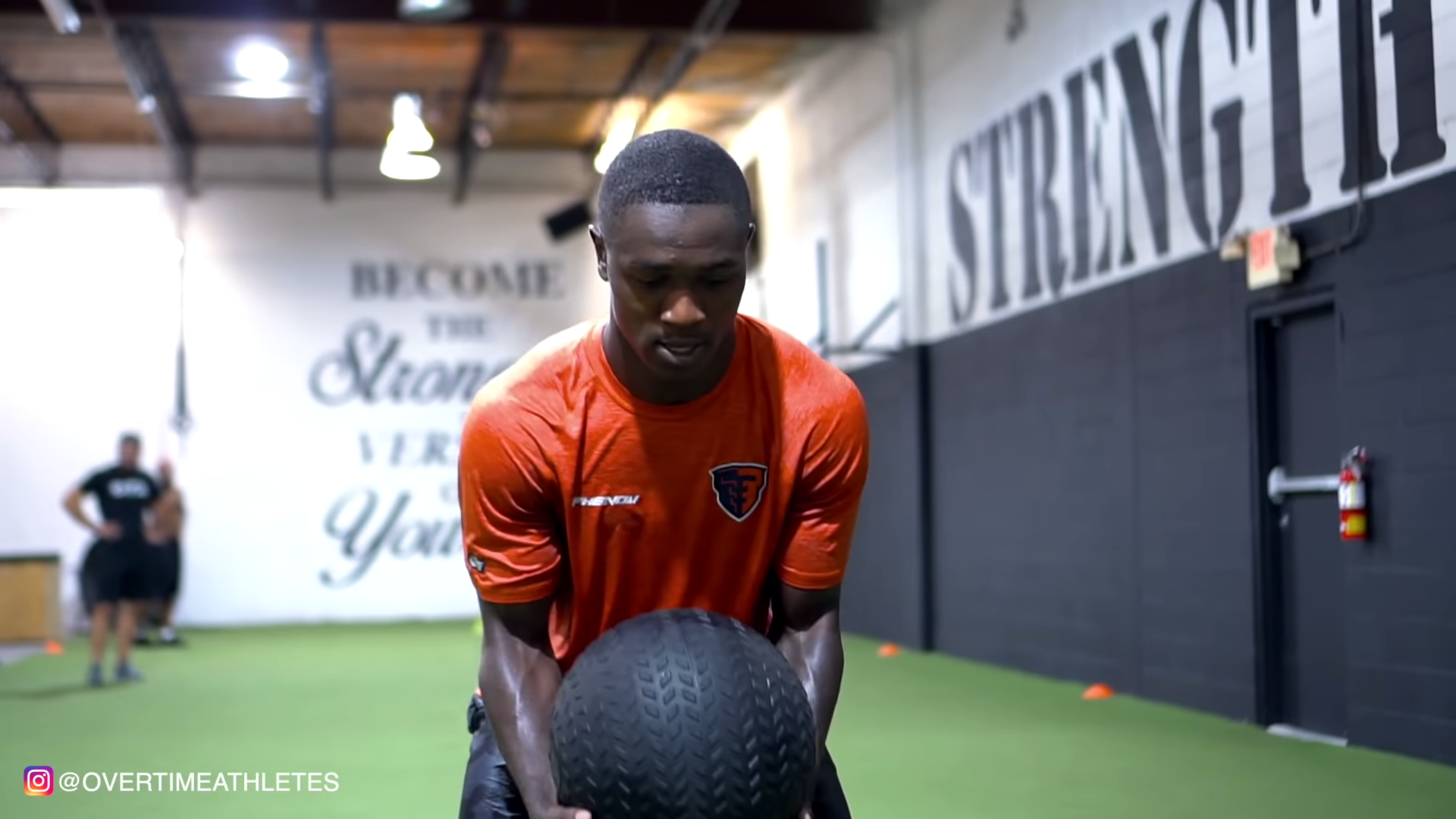Top 5 Weighted Exercises for Vertical Jump
Today we’re going over one of the topics that I get asked most about – the vertical jump When it comes to increasing a vertical jump, lots of athletes are looking for answers on how to train for it, as well as what the best techniques and exercises are. So, I figured I’d share my top 5 weighted exercises for vertical jump.
Keep in mind that a lot goes into increasing your vertical jump such as working specifically on technique, stretching the hip flexors, and just getting your jumps in.
But, having a base of strength doesn’t hurt your bounce.
In fact, it will help it BIG TIME.
So, sit tight, grab a pen and paper, and take notes… Because I’m about to hand you my list of top 5 weighted exercises to improve your vertical jump.
TOP 5 LIFTS TO INCREASE YOUR VERTICAL JUMP
BOX SQUAT

- Place a plyometric box (just below knee height) behind you a few feet while you set up for a barbell squat.
- Unrack the barbell onto your shoulders and walk backward until you stand in front of the plyometric box
- With your heels almost touching the box, keep a straight spine and lead with the glutes to lower into a squat so that you tap the box
- Drive up through the heels and come to standing.
I like to have athletes use a taller box here as it puts them into a ¾ squat position, similar to the takeoff for a vertical jump. Then, we can work on pure concentric strength in a sport-specific position. This allows an athlete to produce more force and get higher off the ground.
You can also vary your box squat training by manipulating both tempo and intensity. If there’s lighter weight on the bar, we can increase the tempo and work on speed to develop rate of force development. You can also add more weight and decrease the speed of reps to work more absolute power and strength.
TRAP BAR DEADLIFT

- Step inside of the trap bar and grab both handles on either side of you
- Maintain a straight spine, tuck the chin, brace the core, and drive through the legs until you are standing tall
- Return to your starting position
This exercise is very similar to the box squat in that training modalities will be determined based on the specific athlete. Here you can vary between using lighter weight and a faster tempo for speed-strength development or increasing the weight and slowing down the reps to build absolute power. Trap bar deadlifts are a great way for athletes to increase their glute and hamstring strength which are essential to jumping.
You can also add blocks underneath the plates of this deadlift to put athletes in the ¾ squat which is the start position for a vertical jump.
KETTLEBELL BAND SWING

- Begin by standing on a band with both feet hip width apart
- Loop the other end of the band through the handle of a kettlebell
- Start building momentum by swinging the kettlebell through the legs and up only as high as shoulder height
- You want to maintain a deadlift position here with a straight spine, hinging at the hips and keep the arms long.
- As you begin to straighten to standing, contract the glutes and extend the hips
I love this exercise because the banded resistance increases the time under tension during the eccentric phase. As you perform the exercise, you are constantly working prevent the band from overpowering you. The band also forces you to accelerate through the entire movement, instead of decelerating towards lockout. This is more specific to the vertical jump.
The kettlebell swing movement also trains the athlete to work on their vertical explosion and upward arm swing when working on the vertical jump.
HANG CLEANS

- Start by grabbing a loaded barbell on the ground with a deadlift-like stance (feet under your hips and hands under your shoulders)
- With a slight bend in the knees, begin to drive up to standing through your feel keeping the bar close to you
- As the bar reaches mid-thigh level, hinge at the hips and push the butt back maintaining a neutral spine
- Next drive the hips forward and come into ¾ squat under the barbell while snapping the elbows forward so you catch the bar at your chest
- Lower the bar with control and repeat
This is one of my favorite exercises. It works absolute power through a triple extension of the hips, knees and ankles while requiring explosiveness when coming up from the ground. This makes the hang clean an essential to vertical jump training. It’s an exercise where you can work up to heavier weight with a lower tempo and good form for strength building.
OVERHEAD REVERSE MEDICINE BALL TOSS

- Begin by standing with both feet hip width apart
- With straight arms, lower the medicine ball down coming through the legs
- Quickly leaning back, contract the glutes to drive your hips and swing the ball forward
- Keeping the arms straight, and coming to a totally upright position, toss the ball straight up
This exercise is another great choice for developing speed and power. Again, this movement works triple extension of the hips, knees, and ankles this translates to quickness and a higher vert. The overhead toss also helps to develop a connection between the upper and lower body which allows you to remain stable while performing powerful lower body movements.
While it didn’t make the cut for Top 5 exercises, the snatch grip deadlift is another essential lift that I love to work on with slow and controlled reps to build pure strength in the posterior chain.
Another important reminder:
When working to increase your vertical jump, be sure you’re taking a full approach by developing technique, getting in good jumping reps and stretching the hip flexors.
